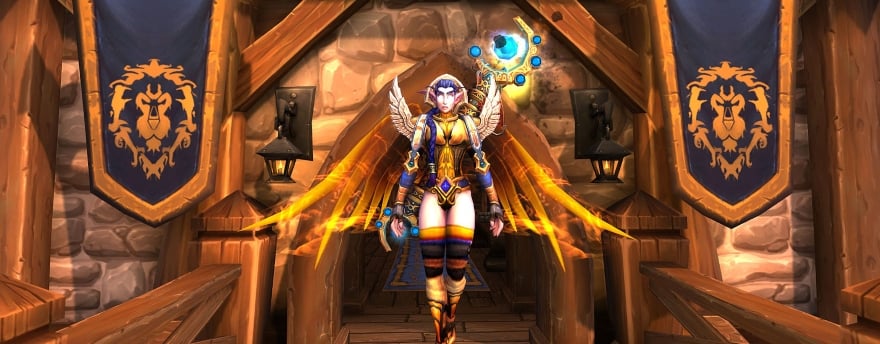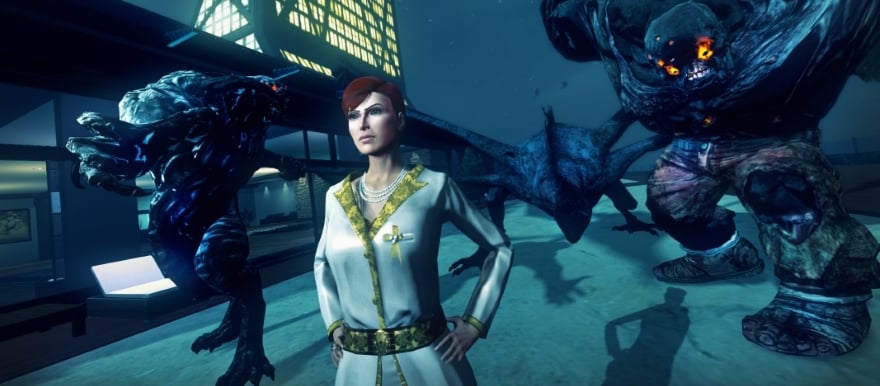
Not too long ago, there was all but one way that you would pay for an MMO, and that was as a monthly subscription. Oh, it used to be an hourly sub back in the wild early days of the genre, when keyboard cowboys thought nothing about racking up $481 a month playing a game on a 400-baud modem, but in the late ’90s, the monthly sub model established itself as the baseline, and most all MMORPGs fell into line behind it.
Though a rare few western games dabbled in a free-to-play model along the way, it was Turbine’s decision to embrace it with Dungeons and Dragons Online in 2009 that brought it to the mainstream in the west. Since then, studios have been experimenting with business models left and right, trying to come up with the most attractive method of emptying your wallets into their coffers.
Sometimes business models can get incredibly confusing, especially when games will use the same terminology in different ways. Today we’re going to walk through all of the major types of models that MMOs and their cousins are using. Hopefully we can find the right model that fits your budget and comfort!
Subscription
As mentioned earlier, the subscription model is one of the oldest business models in the genre, having been around since the 1980s. The idea here is that you pay one flat monthly fee — usually $15 nowadays, but not always — and you gain full access to the game and its content. The $15/month cost has remained stable over the last decade-and-a-half, although many studios have offered discounts for players who purchase multiple months or even a full year at a time.
While you won’t see monthly subscriptions over $15, some games, such as Final Fantasy XIV, offer subs under the industry standard. These can be enticing if you like a good deal or are considering multiple subs at the same time. It should also be noted that subscription MMOs sometimes require players to pay for the box client and any expansions. This should be considered when starting out, as getting your foot in the door could require a one-time chunk of cash.
Currently Star Wars: The Old Republic is trying to entice players to subscribe as the only path to unlocking its most recent expansion chapters, which is a novel approach.
The subscription model has its pros and cons — and its fans and critics, as well. Some players love it for its one-price-includes-all attitude and the lack of a cash shop, although the latter has been creeping into sub games increasingly over the years. It’s ideal if you have one MMO that you’re going to play regularly, but not as attractive if you’re juggling multiple titles or might only be logging in for a few hours. Critics of the model say that it can make them feel “pressured” to play a game during a month to get their money’s worth.
Tradable subscription
While we’re on the subject of subscriptions, we should mention that some MMORPGs offer a way to sub up that doesn’t involve your money. Tradable subscriptions are an item, such as EVE Online’s PLEX or World of Warcraft’s tokens, that can be purchased by one player for money, then sold directly or through an auction house for in-game currency.
The studios like tradable subscriptions because they’re still making money while at the same time cutting the gold buying and selling industry off at its knees. For the player, it’s advantageous to those who can make enough money every month to buy one of these items, essentially earning their subscription in-game rather than paying for it out of pocket.
Buy-to-play
As seen in games like Guild Wars 2 and Elder Scrolls Online, buy-to-play focuses on the sale of a full-priced client (usually between $50 and $60) with the claim that players can enjoy the game for free after that with no time restrictions.
For the studio, it helps by giving the company up-front lumps of money, bringing the MMO more in line with how standard video games make sales. For players, there’s an initial financial obstacle to overcome but the promise of free sailing past that is most assuredly attractive. Finding this type of game on sale can be an awesome thing because you’ll be getting quite the deal at that point.
One caveat with this model — as with the next that we’ll discuss — is that buy-to-play isn’t free of attempts by the studio to make money off of you after that. This model can and often does host cash shops and sell DLC packs or expansions, but on the whole it doesn’t nickel-and-dime players as badly as seen elsewhere.
Free-to-play
Free-to-play is one of the most tortured terms in the industry, but generally it means a business model that has no up-front cost and a game that players can theoretically play all of the way through or to the top without plunking down money. Its obvious advantage is in lowering the financial barrier to the floor so that anyone can come in and enjoy a game for as long as he or she wants.
Because most studios need to make a profit, most times that you see free-to-play it comes with an asterisk beside the term that points you to the true money-making element. By making the game “free,” studios hope that it will attract more players and keep them around longer so that those who invest time in the game will eventually start sinking money into it through cash shops, subscriptions, or services.
Freemium
“Freemium” is one of those terms that makes you feel dirty just saying it, as if you’ve invoked a curse to raise long-dead pets. Its use in video game business isn’t much more sanitary, to be honest.
This model is more easily understood as a beefed-up trial. You can play the game for free… up to a point. With freemium titles, there’s a hard wall that frugal players will inevitably hit, forcing them to decide whether to pay money to proceed, stay at a certain level or in a certain area forever, or to quit entirely. This model’s bait-and-switch methodology, even if clearly promoted, tends to put players off, which is probably why it’s not as much used in MMOs these days.
Cash shops
Almost any business model can — and often does — come with a crash shop. Also called item shops or stores, these in-game bazaars seek to augment the income from subscriptions and box sales or to be the sole source of revenue for a title. While every shop offers different goods, the common thread is that all beckon to players to dump extra money once they’re hooked into a game.
Cash shops are a sore topic for many MMO players, as everyone has seen examples of these in-game stores harming the overall game by introducing so-called “pay-to-win” advantages, making highly desirable items or essential features only accessible by pay, and otherwise putting the pressure on the community to cough up dough or get left behind.
No two stores are alike, of course. All can offer a mix of cosmetics, consumables, features (such as more inventory space or bank access), mounts, classes, expansions, and DLC packs. Closely tied to the store offerings is the inclusion of lockboxes, virtual treasure chests that are found in the game but can only be unlocked via a key purchased from the shop.
Completely free
Once in a great while, you might encounter an MMO that is completely and utterly free. Not just free-to-play or freemium, but fully free. This might be a game like Meridian 59 that is too old to make money or has been given back to the community, but in any case, players can enjoy the game without spending a dime — and in fact, have no option to drop money on the title even if so desired.
Hybrid
The reality of the MMORPG industry these days is that very few games adhere to a single, unblended business model. Most titles employ two or more models, hoping to both appeal to more gamers and pursue multiple revenue streams at the same time.
So a game like RIFT might advertise itself as “free-to-play,” but what it really is is a hybrid that is part free-to-play and part subscription with a cash shop. The Secret World, which became buy-to-play a while back, has a store that sells DLC, cosmetics, and service options.
Because studios would prefer a steady source of predictable income, there has been a distinct movement in many MMOs to nudge and push players into subscribing. Studios might take away features or otherwise cripple the “free” version to make subscribing more attractive, or they could go the other direction and beef up sub packages to be as attractive as possible. Access to subscriber-only areas and a stipend of cash shop currency are two methods that are employed to prompting players to break out the credit card.

















